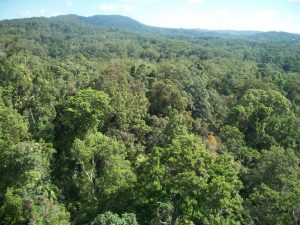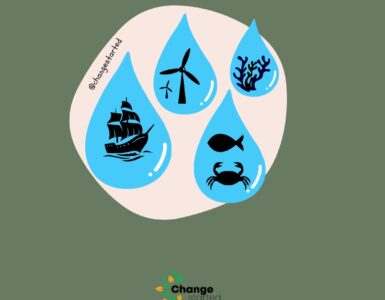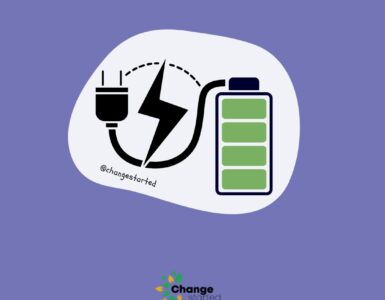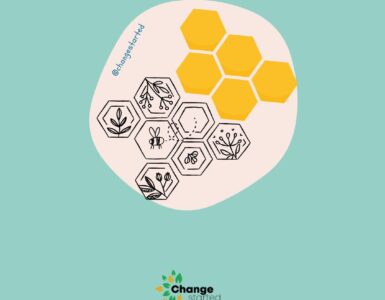Our planet’s health depends on the health of its forests.
These vital ecosystems provide essential services, from climate regulation and water filtration to supporting countless species and millions of livelihoods.
However, deforestation, and clearing of forests for other uses, have severely depleted these resources, causing climate change, soil erosion, biodiversity loss, and desertification.
Reforestation and afforestation have emerged as crucial strategies for restoring and expanding forest cover. Although both of these terms are used interchangeably, it is important to understand their differences for effective and sustainable forest restoration.

About Afforestation
Afforestation establishes forests in areas previously devoid of trees. This can involve planting trees on land cleared for agriculture or for urban development, including previously barren or grassland areas. The projects even allow natural regeneration in recently cleared zones.
Afforestation offers numerous benefits. Trees absorb atmospheric carbon dioxide, mitigating climate change. They also provide wildlife habitat and prevent soil erosion. Additionally, forests can provide timber, fuelwood, and other products, benefiting local economies.
However, careful planning is crucial for carrying out afforestation. Appropriate tree species must be selected, and impacts on water resources, biodiversity, and local livelihoods must be considered.
While native species are often preferred, non-native species suited to local conditions and offering specific benefits (e.g., rapid growth, drought tolerance) may be considered. However, caution is essential to avoid introducing invasive species.
The ultimate goal of afforestation is to create new forests and expand overall forest cover.
Miyawaki Method
In recent times, a new technique of creating forests has caught the fancy of many organisations and government agencies.
In 1970, a Japanese botanist, Dr Akira Miyawaki developed an afforestation technique of creating dense, native forests by planting a variety of local tree species in a small area, using a high-density approach.
This technique is known by its inventor name, Miywaki and it mimics the natural growth patterns of forests, aiming to restore the ecosystem, increase biodiversity, and boost carbon sequestration.
Miyawaki focuses more on creating new, self-sustaining forests rather than just replacing what was lost.
Success Stories
Liangdu Afforestation Project – This is a large-scale afforestation initiative in Liupanshui City, Guizhou Province, China, transforming 23,720 hectares of barren land into thriving forests using native species. Apart from reducing greenhouse emissions, the project has created 15,220 jobs, 70% held by women, boosting the local economy and empowering women.
‘El Arriero’ Afforestation Project – This project establishes high-quality timber production in eastern Uruguay, transforming over 5,377 hectares of former cattle grazing land into a forest and sequestering significant carbon dioxide. Furthermore, biodiversity is prioritized by maintaining habitat connectivity.
MahaKumbh Project – At the recent Mahakumbh festival in India’s Prayagraj, the authorities established forests using the Miyawaki method over the past two years. These efforts were made to improve air quality at the world’s largest religious congregation.
About Reforestation
Reforestation focuses on restoring damaged or destroyed forests, whether impacted by natural disasters like wildfires or human activities.
This practice is crucial for restoring the forest’s ecological function and enhancing its health and productivity. Reforestation occurs in diverse settings, from urban areas to rural forests, and can be undertaken by individuals, organizations, or governments.
Various planting techniques exist, including direct seeding, hand-planting, and aerial reforestation. Success depends on factors like climate, soil, and tree species. While awareness of reforestation’s importance has grown, prompting numerous initiatives, significant work remains to fully restore global forests.
Success Stories
Vichada Climate Reforestation Project – In Colombia, the Orinoco Department is doing a reforestation project for degraded areas, creating near-natural forests by planting high-quality hardwoods. Designed for economic, social, and ecological viability, the project demonstrates the potential of integrating economic activity with impactful, long-term environmental stewardship.
BaumInvest Reforestation Project – In northern Costa Rica, a project has transformed 736 hectares of degraded pastureland into thriving forests. Reforesting with indigenous species and teak, the project creates ecologically and socially sustainable forests, benefiting endangered species like the Great Green Macaw and enhancing biodiversity.
Bagepalli Reforestation Programme – In India’s Karnataka state, a reforestation programme has restored degraded land by planting diverse tree species, improving soil fertility, water retention, and future agricultural potential. These lands, belonging to the region’s poorest farmers and labourers, are largely unproductive due to poor soil and water scarcity.
Difference between Reforestation and Afforestation – At a Glance
| Features | Afforestation | Reforestation |
|---|---|---|
| Goal | Create a new forest ecosystem | Restore a pre-existing forest ecosystem |
| Species Choice | May include native and carefully selected non-native species | Primarily native species |
| Complexity | Can be simpler, as there is no pre-existing forest to replicate | Can be complex, depending on the degree of degradation |
| Focus | Establishing a new ecosystem | Re-establishing a former ecosystem |
Planting the Seeds for a Greener Future
Reforestation and afforestation, while beneficial, face several challenges.
Planting non-native species can harm local ecosystems, and poorly designed projects can increase wildfire risk or deplete water resources. Invasive species can hinder regeneration, and growing in unsuitable locations leads to poor growth.
Furthermore, these programs may encounter land-use conflicts with agriculture or urban development, lack of funding, and competition from other land uses.
Both strategies require long-term commitment and meticulous oversight. Effective monitoring of tree growth and maintenance demands ongoing resources and expertise.
Both reforestation and afforestation are vital for combating deforestation and its environmental consequences. By restoring degraded forests and creating new ones, we build a more sustainable future.
While differing in approach and target lands, both share the goal of increasing tree cover and planetary health. Understanding their nuances is crucial for effective, sustainable forest management for present and future generations.
The current obstacles present with both of these techniques necessitate careful planning, adaptive management, and community engagement. After all, investing in these initiatives is an investment in our planet’s future.






Add comment